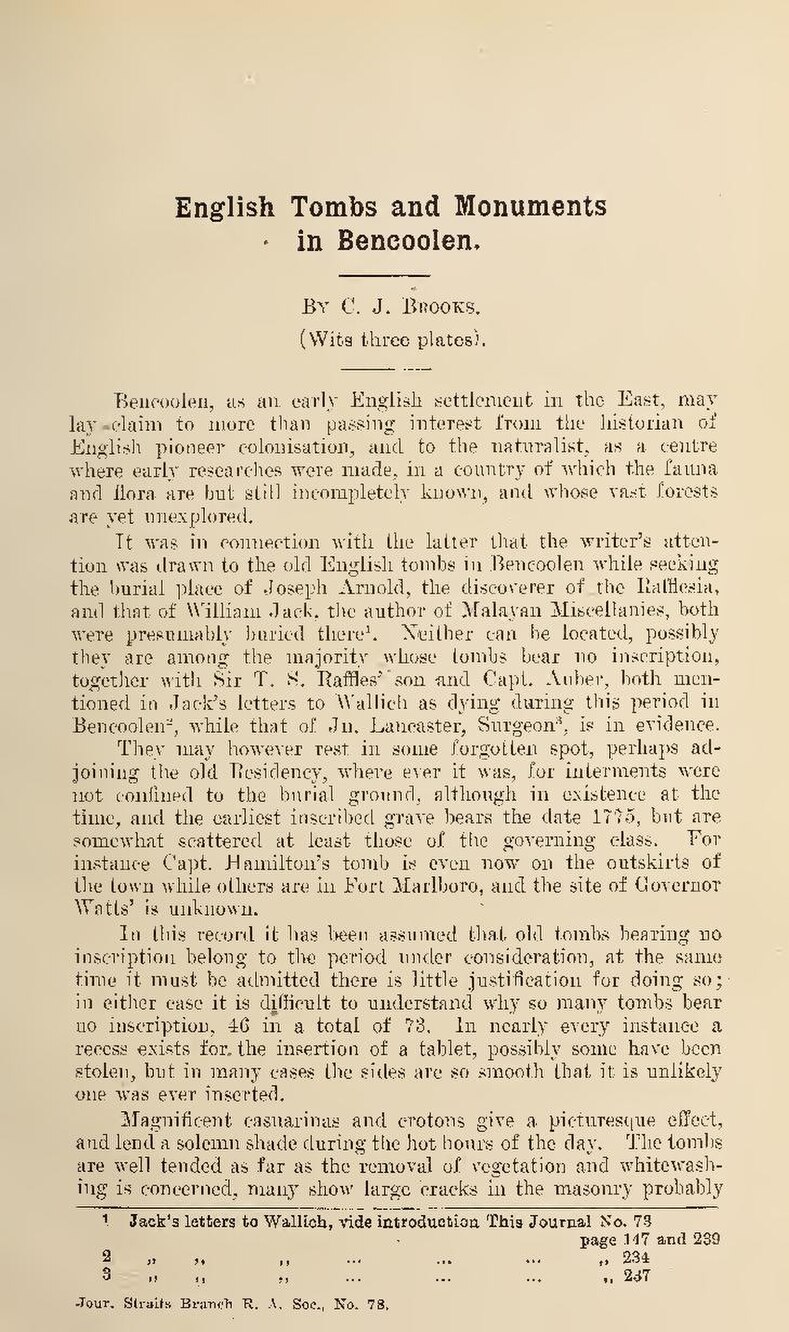English Tombs and Monuments in Bencoolen.
By C. J. BROOKS.
(Wits three plates).
Bencoolen, as an early English settlement in the East, may lay claim to more than passing interest from the historian of English pioneer colonisation, and to the naturalist, as a centre where early researches were made, in a country of which the fauna and flora are but still incompletely known, and whose vast forests are yet unexplored.
It was in connection with the latter that the writer's atten- tion was drawn to the old English tombs in Bencoolen while seeking the burial place of Joseph Arnold, the discoverer of the Rafflesia, and that of William Jack, the author of Malayan Miscellanies, both were presumably buried there[1]. Neither can be located, possibly they are among the majority whose tombs bear no inscription, together with Sir T. S. Raffles' son and Capt. Auber, both men- tioned in Jack's letters to Wallich as dying during this period in Bencoolen[2], while that of Ju. Lancaster, Surgeon[3], is in evidence.
They may however rest in some forgotten spot, perhaps ad- joining the old Residency, where ever it was, for interments were not confined to the burial ground, although in existence at the time, and the earliest inscribed grave bears the date 1775, but are somewhat scattered at least those of the governing class. For instance Capt. Hamilton's tomb is even now on the outskirts of the town while others are in Fort Marlboro, and the site of Governor Watts' is unknown.
In this record it has been assumed that old tombs bearing no inscription belong to the period under consideration, at the same. time it must be admitted there is little justification for doing so; in either case it is difficult to understand why so many tombs bear no inscription, 46 in a total of 73. In nearly every instance a recess exists for the insertion of a tablet, possibly some have been stolen, but in many cases the sides are so smooth that it is unlikely one was ever inserted.
Magnificent casuarinas and crotons give a picturesque effect, and lend a solemn shade during the hot hours of the day. The tombs are well tended as far as the removal of vegetation and whitewash- ing is concerned, many show large cracks in the masonry probably
